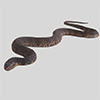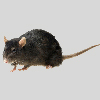Phoenix Wildlife Control
Whether you have a squirrels in your attic, a raccoon problem, a bird or bat issue, snakes, a rat or mouse infestation, skunks, moles and more, we can help.
Wild Defense
We are a professional wildlife control company servicing the Phoenix, Arizona area. Our line if work is also referred to as nuisance wildlife removal, animal damage control, animal trapping, etc. We specialize in solving conflicts between people and wild animals, throughout Phoenix. Call Wild Defense any time for a phone consultation to learn about their services, at 951-216-1806.

Though some wildlife removal companies also provide general pest control, including insect control, Arizona animal removal is a specialty service, quite a bit different than the work of a normal exterminator company. Nuisance animal control companies provide
general animal trapping and wildlife prevention, including animal damage repairs. Services may vary, but most companies remove animals in the house or attic like squirrels or rats, and also handle raccoons, opossums, or skunks, bird or bat colony removal, emergency snake or dead animal removal services.
FAQ's
Learn more about Wild Defense of Phoenix, Arizona.
Services
For an accurate list of services, consult wilddefense.com. Most animal removal companies provide a complete range of services to solve every wild animal problem in Arizona. Not just animal trapping and relocation, but wildlife prevention, such as home repairs to close entry holes, fencing around sheds or decks, etc. Dead animal removal and odor control. Emergency services, such as snake removal. Most companies do rodent control of rats & mice, bat colony removal, bird control and prevention, mole trapping, and even attic cleanup. Call 951-216-1806 to check.
Range
Servicing the Phoenix, Arizona area, but may extend beyond that. If unsure, visit wilddefense.com or call them at 951-216-1806 to find out their service locations and range.
Hours
Most companies do a pretty good job of answering their phone and being available most days, in particular because animals can be trapped on Sundays, or emergencies can happen those days. But hours may vary. Just call 951-216-1806 to see if they're available.
Reviews
You can read reviews of Wild Defense in Phoenix, AZ on sources such as Google My Business listings, Yelp, or even Facebook if they have accounts in these places. You might also find Wild Defense reviews on Home Advisor, Indeed, BBB, Glassdoor, Nextdoor, Angie's List, or more. I don't know the Better Business Bureau rating of Wild Defense, or have links to their Facebook page or Yelp, but it's an easy search away. Of course, online reviews, both good or bad, are often fake for various reasons. Your best bet is to call and find out if you like them! Be sure to talk to a technician, not just a phone receptionist.
Prices
Prices for wildlife control are rarely standardized, because every job is different: the type of animal, number of animals, repairs needed, etc. Call 951-216-1806 for better details.
Contact
The best method of contact is to call 951-216-1806, but if you want to email Wild Defense, visit their website at wilddefense.com and use the published contact form or email.
Jobs
Is Wild Defense hiring and can you get a job as a critter removal specialist? I don't know - call them and find out.
Animals We Remove
Raccoons cause a variety of problems: they break into attics, damage homes, they steal garbage or pet food, tear up sod, and much more.

Raccoons
Strong & SneakySquirrels commonly enter attics or eaves of homes in the late summer and late winter, where mother squirrels have a nest of young.

Squirrels
Attic InvadersBats love to live in certain buildings, where they can, over time, form huge colonies and leave a lot of guano and urine behind.

Bats
Building ColonizersMost snakes are non-venomous. But many people are unable to correctly identify snake species, and are scared to have these reptiles around.

Snakes
Are they dangerous?Rats and mice commonly enter people's homes, where they can chew electrical wires or wood, eat food, and leave droppings and urine behind.

Rats / Mice
Spread DiseaseOpossums and other ground-dwelling animals such as skunks or groundhogs can dig your yard, rummage pet food or crops, etc.

Opossums
Rummagers / DiggersAbout Arizona Wildlife
The desert climate and backdrop of Arizona is combined with mountain regions, pine forests, and large canyons, providing a wealth of habitats for an interesting mix of wildlife. The state has more venomous rattlesnakes than any other, is home to the cartoon favourite: roadrunner, and even hides a potentially deadly lizard.
Arizona Pest Species
Pest animals in Arizona come in many forms and will change depending on where you are in the state. Bats, skunks, raccoons, squirrels, badgers, Canada geese, other birds, gophers, foxes, rats, mice, and many more critters can cause problems with businesses, agricultural areas, and residential premises, in a host of ways. This can include damage to property, the spread of disease, other biological hazards, bad smells, ugly stains, structural instability, and more. We do not recommend waiting to sort out a nuisance wildlife problem - that just gives the animal time to wreak more havoc.
Arizona Amphibians
Arizona is home to three species of salamander. The Tarahumara salamander is the most common and is thought to reside across all of the state, and the Eastern tiger salamander is generally thought to inhabit regions on the southern most border, which is also where you'll find the introduced barred tiger salamander.
Moving along to frogs and toads, two species of spadefoot toad (which are actually frogs) live in Arizona - Couch's and Plains spadefoot toads. You will likely only spot them after a period of rain; they spend most of their time underground.
The state is also home to three species of "true frog": the common bullfrog, and the less common Plains leopard and Rio Grande leopard frogs. There are also small southern/southeastern populations of the Great Plains narrowmouth frog and eastern barking frog; two species of tree frog (Wright's mountain and Canyon tree frog), and five species of toads: Woodhouse's, red-spotted, Arizona, green, and Great Plains toads. The latter five carry toxins on their skin, so we definitely don't recommend getting too close to them.
Arizona Bats
The most common bat in Arizona is the little brown bat. This species is essential for insect population control, and it has been estimated that a single, decently-sized colony can devour close to 500,000 kg of insects every night.
In total, 25-30 bat species are said to inhabit the state - including the Townsend's big-eared bat, big brown bat (one of the fastest North-American bats), and hoary bat - although the latter is very secretive and seldom spotted (and eats mostly mosquitos).
The full list of bat species associated in Arizona is:
- Western pipistrelle
- Hoary bat
- Long-legged bat
- Pallid bat
- Western Mastiff bat
- Fringed bat
- Arizona bat
- Little brown bat
- Long-eared bat
- Western small-dotted bat
- Pocketed free-tailed bat
- Big free-tailed bat
- Mexican long-tongued bat
- Lesser long-nosed bat
- Southwestern bat
- California bat
- Western yellow bat
- Western red bat
- Townsend's big-eared bat
- Allen's big-eared bat
- Big brown bat
- Spotted bat
- Silver-haired bat
- Mexican free-tailed bat
- Big free-tailed bat
Arizona Birds
This state is home to more than 560 different species (/subspecies) of birds, but around 100-150 of them are only part-time inhabitants. This list of birds includes eight species that have been unnaturally introduced to the state, and four or five of them are now considered to be extirpated despite conservation efforts.
The most common species include the mourning dove, house finch, Gilda woodpecker, verdin, lesser goldfinch, Anna's hummingbird, and white-winged dove. If you head into the more rural areas, you're also likely to spot the colourful cardinal, black-throated sparrow, great blue and green herons, osprey, red-tailed hawk, tree swallow, and many more.
The state bird of Arizona is the cactus wren.
Arizona Carnivores
Arizona was once home to an impressive array of quite dangerous carnivores, including the Mogollon mountain wolf and Southern Rocky Mountain wolf, but both of these are now extinct. The Mexican wolf can still be found in the state, but this is only because of an extensive conservation project. Recent counts estimate that around 70 of the carnivores presently reside in Arizona, and more than 220 in total across Arizona and New Mexico.
The coyote is still fairly common in Arizona and even has the potential to be a dangerous pest animal, and the gray wolf, gray fox, kit fox, and red fox are still present in the state.
Moving along to big cats in Arizona and you will find the cougar, jaguar, bobcat, and ocelot in rural areas. The jaguar is thought to be a vagrant population, however; and the once-present margay is now extirpated. The raccoon-related ring-tailed cat is also found in the state, along with the white-nosed coati.
Four different species of skunk can be found in Arizona : western spotted skunk, striped skunk, hooded skunk, and American hog-nosed skunk. Skunks can be quite problematic in some parts, too, especially in residential back gardens where it digs and uproots plants as well as causing potential structural problems to paths and buildings.
Arizona Eulipotyphlans
There are seven species of shrew found in Arizona, including the North American least shrew - one of the smallest mammals on Earth. This species is joined by the smallest diving mammal, too: the American water shrew, sometimes referred to as the northern water shrew.
You may also encounter the Montane, Merriam's, Cinereus (also known as common), Crawford's gray, and Arizona shrews - but these critters are notoriously private and rarely seen despite being quite common in the territories they inhabit.
Arizona Rabbits
Five species of rabbit and hare are known to inhabit Arizona:
- Mountain cottontail
- Eastern cottontail
- Desert cottontail
- Black-tailed jackrabbit (sometimes called the American desert hare)
- Antelope jackrabbit
The white-tailed jackrabbit was once thought to have resided in Arizona, but sightings are incredibly rare, and in neighbouring New Mexico the animal is listed as threatened.
The most common species of rabbit or hare in Arizona is the eastern cottontail. It is not unusual for this critter to pose nuisance wildlife issues.
Arizona Reptiles
19 species/subspecies of non-venomous snake are said to inhabit the territories that Arizona has to offer, as well as 22 species of venomous snake. The state snake is the venomous Arizona ridge-nosed rattlesnake.
Arizona is home to 13 other species of rattlesnake:
- Banded rock rattlesnake
- Twin-spotted rattlesnake
- Speckled rattlesnake
- Western diamondback rattlesnake
- Prairie rattlesnake
- Sidewinder rattlesnake
- Grand Canyon rattlesnake
- Arizona black rattlesnake
- Great Basin rattlesnake
- Northern black tail rattlesnake
- Mojave rattlesnake
- Tiger rattlesnake
- Hopi rattlesnake
The most dangerous and toxic of these is the Mojave rattlesnake, but it doesn't bite as many people as another species: the western diamondback rattlesnake, which is also the largest rattlesnake in Arizona. These two snakes are also the most common snake encountered in the state, joined by the sidewinder.
It has been estimated that between 250 and 350 people are bitten by a snake each year in Arizona, often caused by unsafe removal/control measures, accidental ambushes, and misinformation. With more venomous species than any other state, it is recommended to call in a professional snake removal expert if you come across one on your Arizona property, especially if you cannot confidently identify the species.
The infamous gala monster can be found in Arizona, an animal protected by state law. This is (thankfully) the only venomous lizard you'll find here, and also across the rest of the U.S. - but it is nowhere near as frightening, or as deadly as you might've been led to believe. The lizard is actually quite sluggish and lazy and would much rather be left alone.
One of the most common and frequently sighted lizards is the tree lizard, of which a number of subspecies can be found in the state.
The most interesting lizard species is perhaps the desert grassland whiptail lizard, which is a species made up of entirely female individuals that reproduce through a process called parthenogenesis.
Arizona Rodents
Arizona is home to an impressive list of rodents (probably to feed all of those snakes!). There are six species of pocket gopher, ten species of pocket mouse, three species of kangaroo rat, seven species of wood rat, four species of cotton rat, 14 species of mouse, 12 species of squirrel ... and we're still not done!
You can also add the non-native nutria (or coypu), American beaver, prairie dog, and North American porcupine.
The most common rodents are often the black rat, Norway rat, and house mouse - all three of which are non-native and introduced to the state.

This is a free listing from Augie of AAA Animal Advertising. It is here because you are either a client of mine, or I'm hoping you will consider hiring me, if your area is available.
A page like this helps your business - it helps more customers find you, your website wilddefense.com and your phone number 951-216-1806. This web page is a valuable citation that links back to your web site and helps your search engine rankings.
I sell wildlife control leads - through my network of dozens of popular nuisance wildlife websites, I generate hundreds of calls per month in the Phoenix area. My leads are of higher quality
and lower cost than other providers, such as Google Adwords, Home Advisor, Yelp, Angie's List, and others. I typically charge a range of $15 - $20 per customer call you receive. I don't do contracts, you only pay after you get the calls,
you can quit any time. Most of my clients have been with me for 5+ years. I have over 200 clients nationwide, and my clients include Terminix, Critter Control, TruTech, as well as many one-man operations.
If you're interested, email me at augiewildlife@gmail.com or call me at 747-777-6115, and we'll discuss if your area is available. Many areas are sold out, but I work every day to generate more leads, and
there's a good chance leads are available for you in Phoenix.